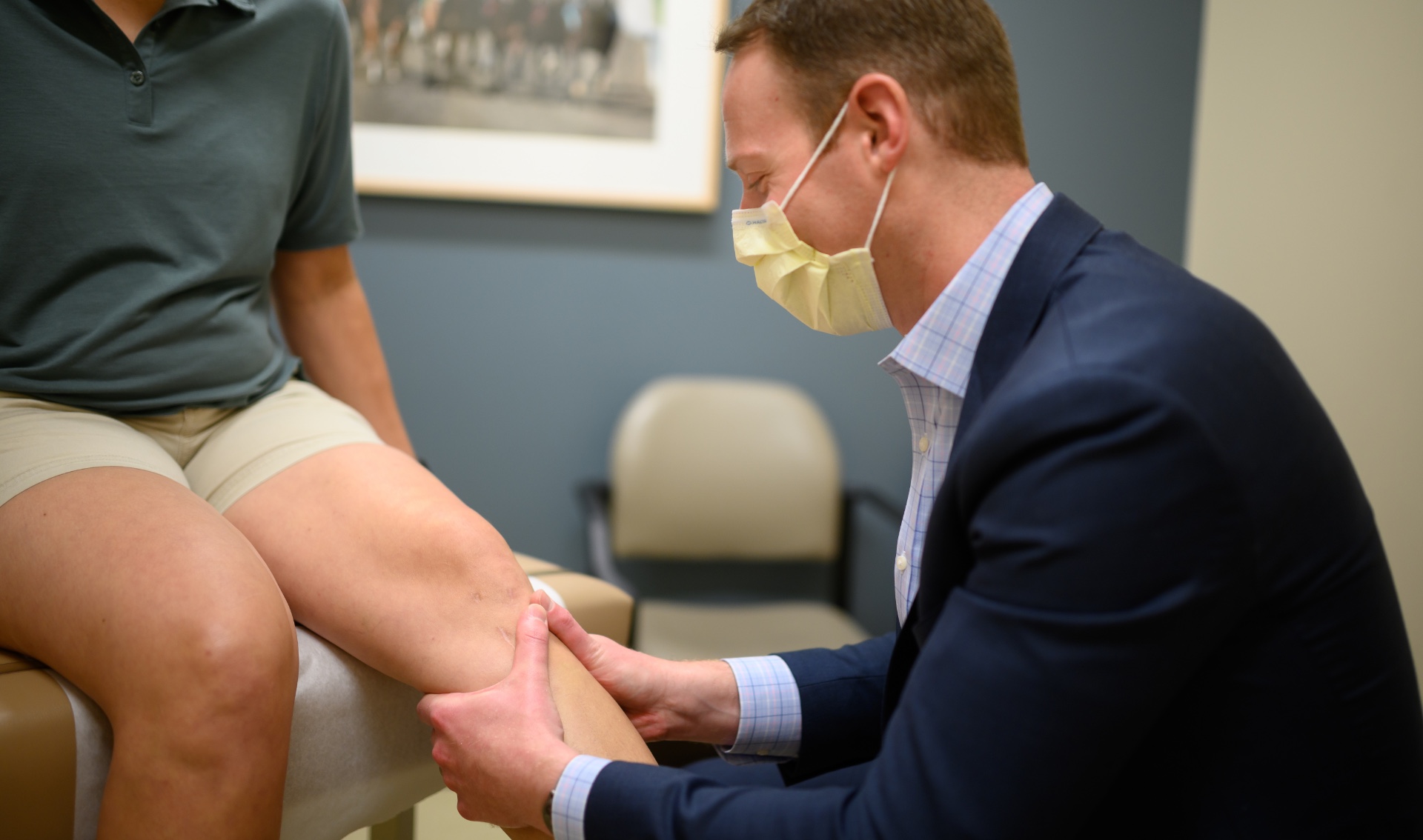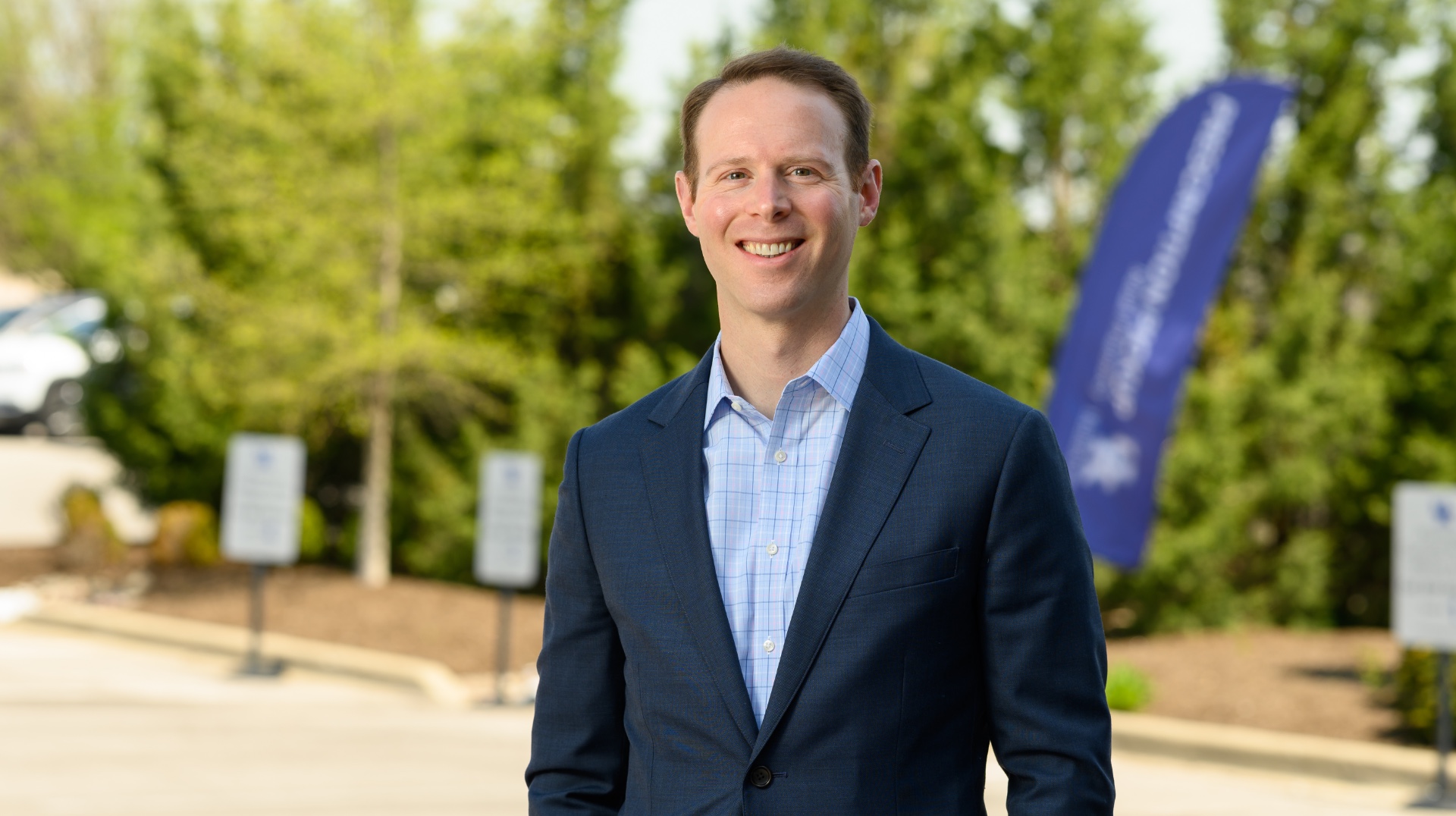Knee specialist (and Bengals fan) Austin Stone shares the ins and outs of MCL injuries

The final chapter of the Cincinnati Bengals’ Cinderella-run through the NFL Playoffs will be written Sunday when the team faces the Los Angeles Rams in Super Bowl 56.
Will a key player who helped propel the Bengals to their first Super Bowl appearance since 1989 be available to help the cause?
Starting tight end C.J. Uzomah suffered a sprained medial collateral ligament (MCL) in Cincinnati’s come-from-behind win over the Kansas City Chiefs in the AFC Championship on Jan. 30.
The Bengals have not ruled him out for the Super Bowl, and Uzomah has expressed optimism that he can recover in time to take the field Sunday.
With that in mind, we recently spoke with Dr. Austin Stone, a knee and shoulder specialist at UK Orthopaedic Surgery & Sports Medicine, about MCL injuries and how they are treated.
What is an MCL?
The MCL is the medial collateral ligament of the knee. It attaches the femur (thigh) bone to the tibia (leg) bone on the inside portion of the knee.
What happens when someone sprains an MCL and how does a sprain differ from a tear?
A sprain of the MCL is stretching of the ligament and is partial thickness tearing. Tearing can progress through grades 1 (mild), 2 (moderate) and 3 (severe). Typically, the greater force on the knee during injury, the more severe the sprain. MCL tears may be associated with other knee injuries, including anterior cruciate ligament tears, meniscus tears and multi-ligament knee injuries.
How are MCL sprains typically treated?
MCL sprains are typically treating with bracing. Non-operative management is the mainstay of treatment, and the time it takes to return to athletic activity varies. Return-to-sport time for grade 1 MCL tears may be as soon as one to two weeks, but more severe tears require longer periods of rehabilitation ranging from weeks to months. The most severe tears are sometimes treated with surgical repair or reconstruction, depending on the associated injuries.
Is this an injury you see often? If so, who is your typical patient?
Medial collateral ligament injuries are extremely common. Both contact and noncontact athletes sustain these injuries frequently. The medial collateral ligament is often injured in low-energy falls as well. This ligament could easily be sprained on the football field or by slipping on ice.
Does the treatment for an athlete differ from treatment for a non-athlete?
The strategy for treating medial collateral ligament injuries is similar regardless of the patient type. Controlling pain and inflammation is important. Balancing healing and restoring range of motion is very important. For most patients, a gradual return to low-demand physical activity or work is reasonable. Accelerated timelines may be preferred for athletes, but the biology of ligament healing remains the same. The knee must not be stiff or sore and the surrounding quadriceps and core muscles must be well rehabilitated to be effective in returning to sport.
What type of specialty treatment might the Bengals be using on Uzomah?
Professional athletes have a wide range of expert attention available. Icing is an extremely common treatment after knee injury to help control pain and inflammation. Early and controlled range of motion is important and therapists and athletic trainers may be helpful in using treatments such as electric stimulation or blood-flow restricted therapy to help keep the muscles strong without stressing the injured joint. Many of these same therapies and strategies are actively employed at the University of Kentucky.
What’s the usual timeline to fully recover from a sprained MCL?
The timeline varies widely and may be as soon as one to two weeks for grade 1 sprains and several months to a year for grade 3 sprains, depending on the severity.
Why is UK HealthCare the best option for athletes seeking treatment for knee injuries?
UK Sports Medicine offers readily accessible orthopaedic sports expertise. The University of Kentucky Sports Medicine Walk-in Clinic allows patients to be seen by board-certified sports medicine physicians within 72 hours of the injury. The team of primary care sports medicine physicians and orthopaedic surgeons can rapidly diagnose, manage and treat all athletic injuries. All patients are treated with the same care as our college and professional athletes.
Who’s your team in the Super Bowl?
The Cincinnati Bengals. I’ve waited 32 years to see them back in the Super Bowl!
The experts at the UK Orthopaedic Surgery & Sports Medicine early morning Walk-in Clinic are on hand to care for sprains, strains, tears and other sports injuries from 7 a.m.-8 a.m. every weekday at UK HealthCare – Turfland. To schedule an appointment with a sports medicine specialist, call 859-218-3131.






